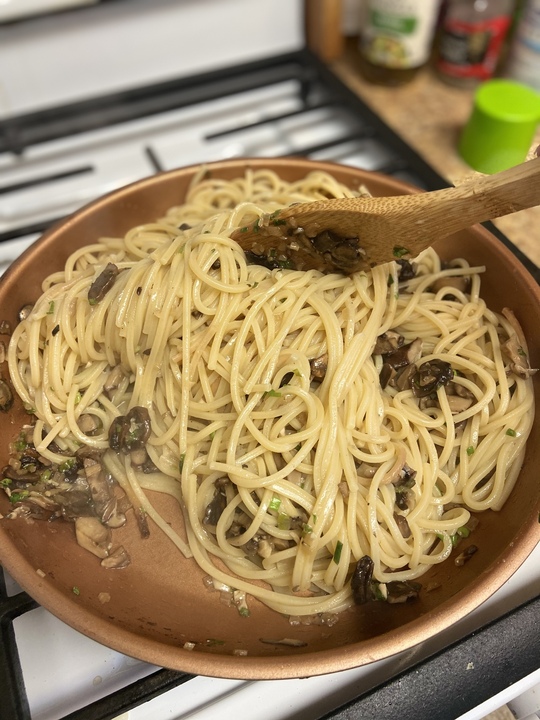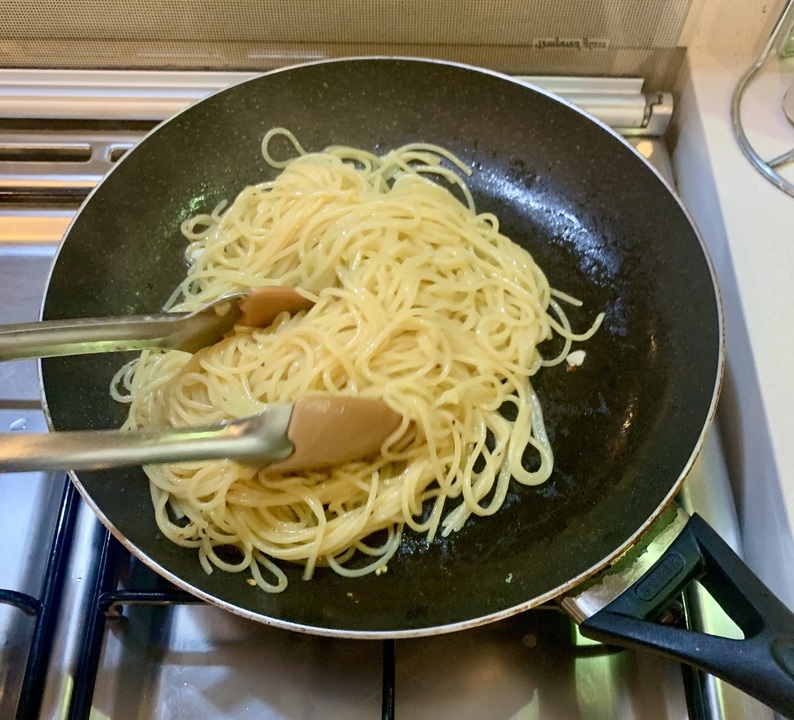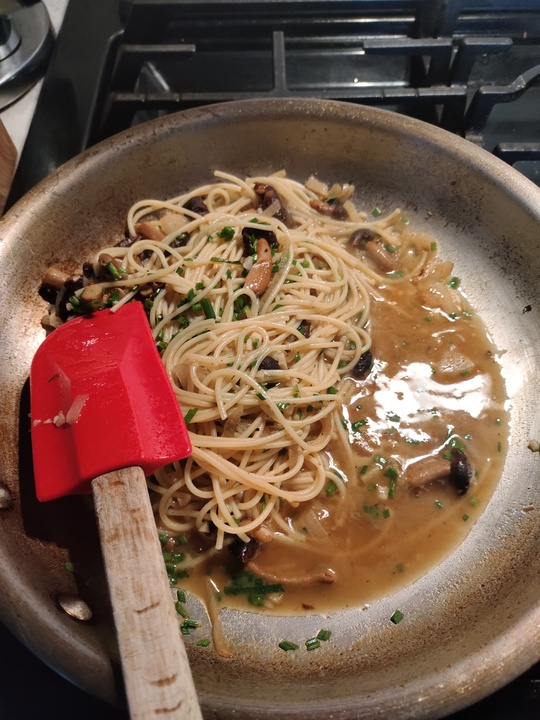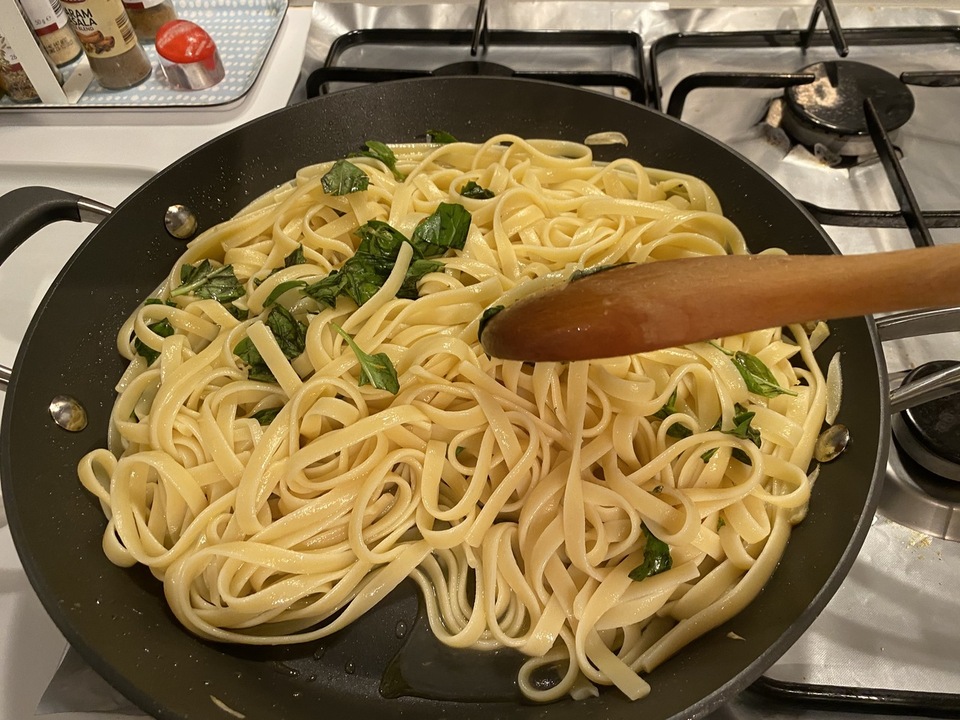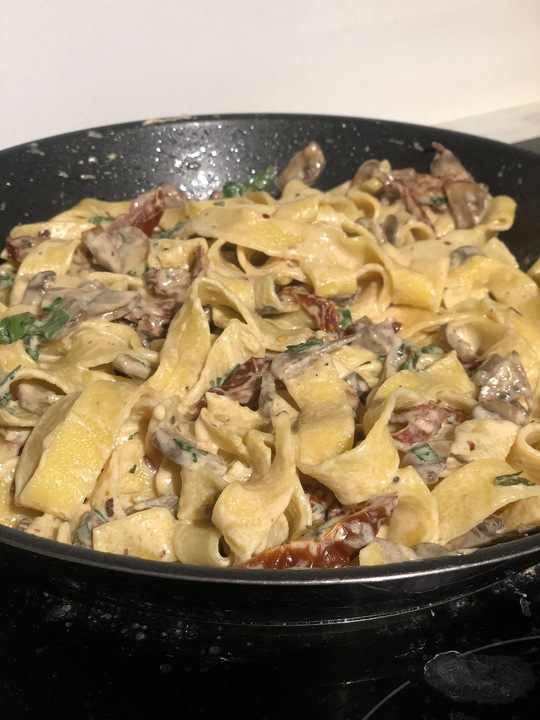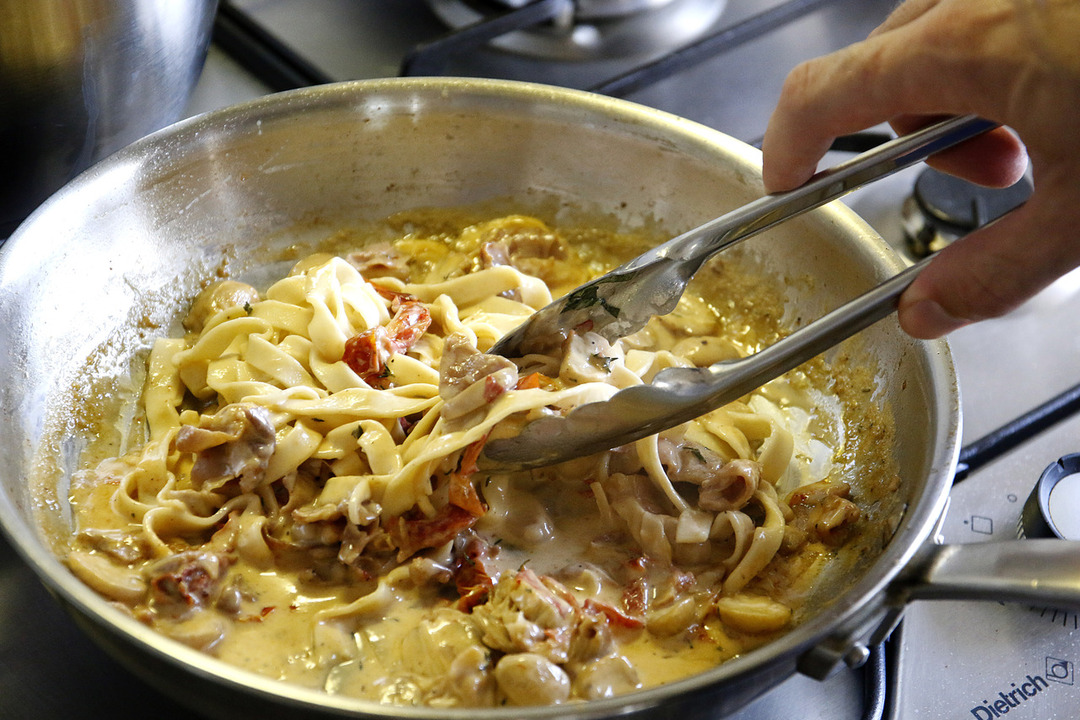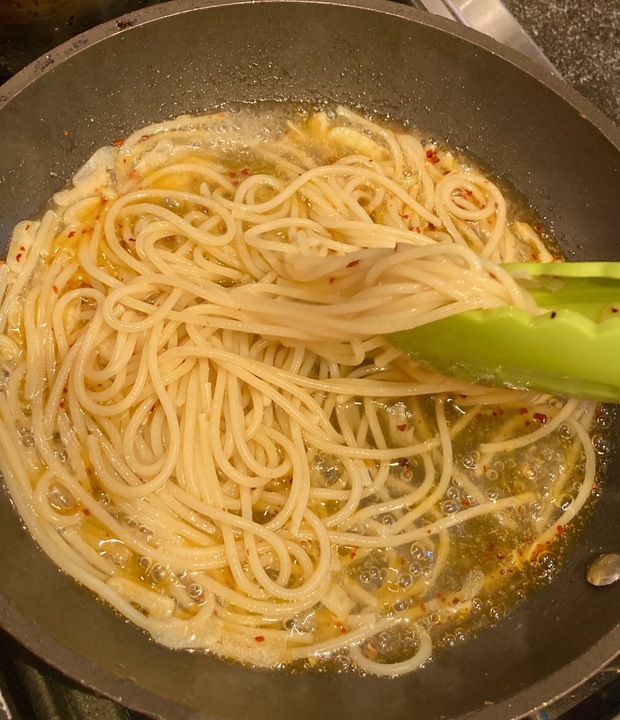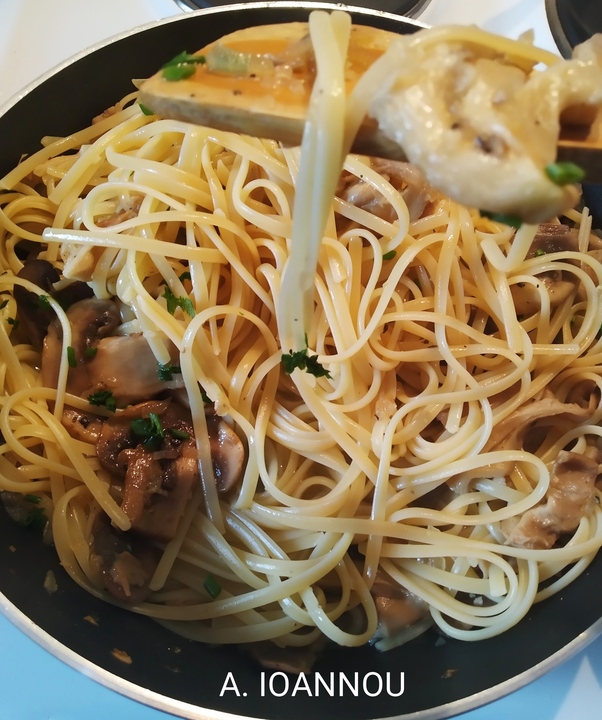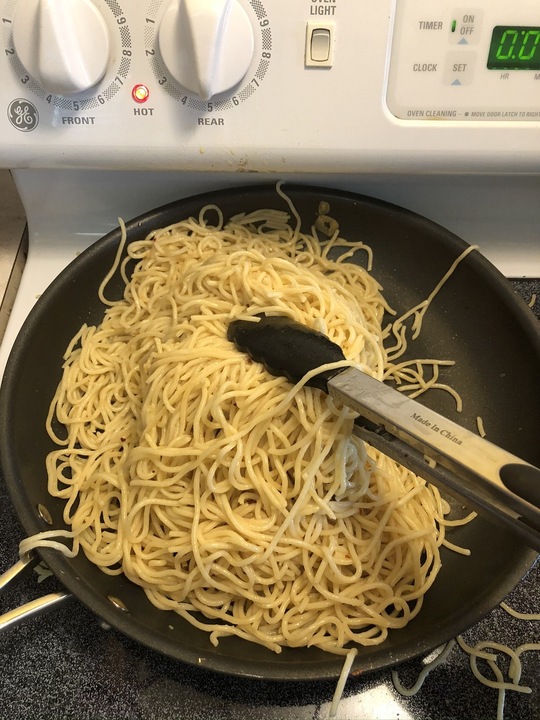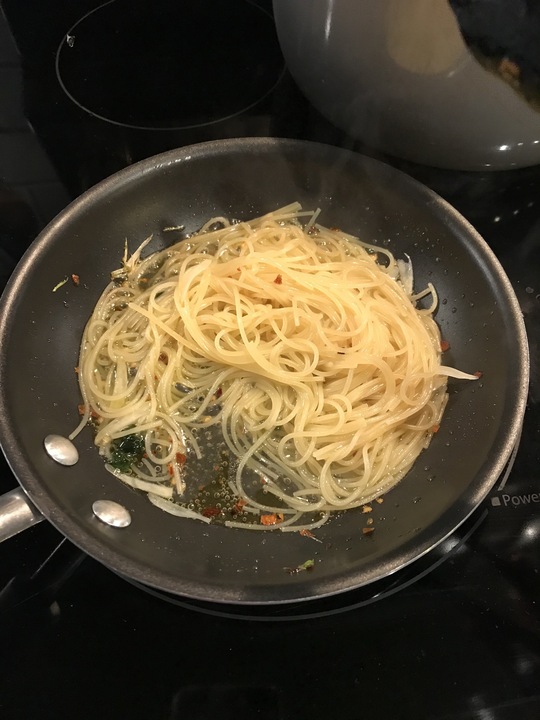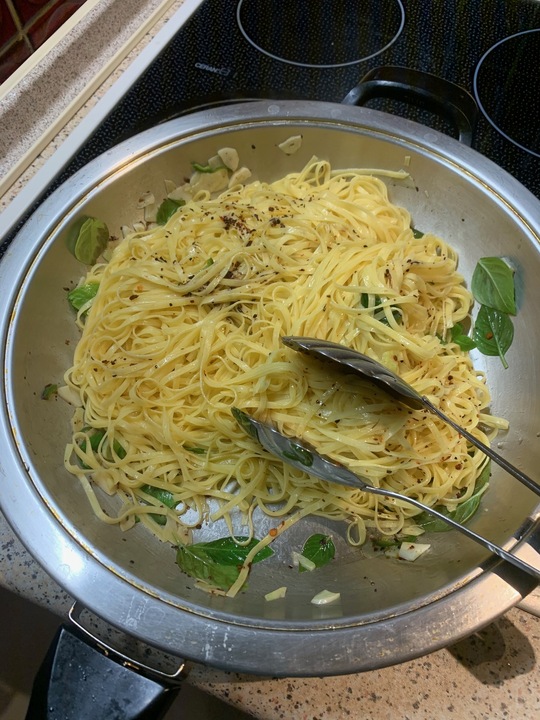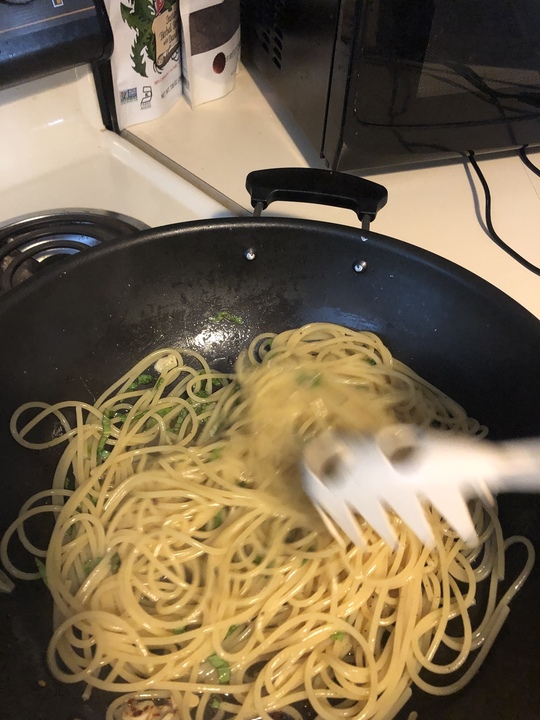Courses > Professional Cook Certification

Course Overview
Rouxbe’s Professional Cook Certification is the world’s leading online certification course for aspiring cooks, culinary students, those already working in the food and culinary industry or for anyone who seeks an intensive immersion in culinary skill and knowledge development.
This course fo…
Click to expand...Course Syllabus
Unit 1: Professional Cook Certification Overview
This unit provides an overview and orientation to this Professional Cook Certification Course. It sets expectations and provides instructions for how to use the course platform to progress through activities and assessments.
Lesson 1
Course Orientation
Lesson 2
Getting Started: Kitchen Tools & Equipment
In this lesson, you will discover how to set up and organize a kitchen with the essential tools and equipment.
Lesson 3
Complementary Skills for Culinarians
This lesson provides basic and foundational culinary training - delivered online to complement your work in the industry. While Rouxbe primarily introduces and reinforces techniques and skills that will help you become a better, more skillful cook, there are also important complementary skills, such as communication and problem-solving skills, that are critical for success in the culinary arts industry.
Unit 2: Basics of Smartphone Food Photography
Lesson 1
The Basics
Lesson 2
Smartphone Camera Lens
Lesson 3
Lighting
Lesson 4
Make Your Go-To Dish
Unit 3: Food & Kitchen Safety
Foodborne illness can be an issue both inside and outside of the home, regardless of how well we think we know our food supply chain. Symptoms can range from an upset stomach to nausea, diarrhea or vomiting. In this unit, you’ll learn techniques and habits to keep your loved ones happy and healthy.
Lesson 1
Unit Orientation
Lesson 2
Introduction to Food Safety
In this lesson, you will learn about the importance of food safety.
Lesson 3
Handwashing
In this lesson, you’ll learn about when to wash your hands, and how to wash your hands properly.
Lesson 4
Buying & Storing Food
In this lesson, you will learn about the proper storage of food in the refrigerator and freezer, as well as dry storage. You’ll also learn about the order in which to put away groceries, how to separate food from chemicals and cleaners, and how to properly deal with leftovers.
Lesson 5
Preparing Food
In this lesson, you’ll learn about cross-contamination and how to avoid it. You’ll learn about the danger zone and the importance of controlling temperature when cooking, cooling and reheating food. You’ll also learn how to use a thermometer properly and when it’s appropriate to use one, and how to microwave food safely.
Lesson 6
Cleaning Up
In this lesson, you’ll learn the importance of keeping a clean kitchen, and when and how to clean it. You’ll learn the difference between cleaning and sanitizing, and how these concepts apply to food preparation surfaces like counters and cutting boards.
Lesson 7
Kitchen Safety Basics
In this lesson, you will learn how to keep safe in the kitchen, what hazards may occur and how to apply simple first aid.
Lesson 8
Unit Review & Assessment
Unit 4: Knives, Knife Cuts & Knife Sharpening
This unit charts a path for you to become more comfortable and proficient with handling a knife. Since a knife is the most important tool in the kitchen, we offer guidance on how to select and care for your knives while giving you ample opportunity to practice your skills.
Lesson 1
Unit Orientation
Lesson 2
Selecting a Knife Set
Learn what to look for when selecting the right knife for you and why it's important to use high-quality knives.
Lesson 3
Proper Knife Handling
Tackle the techniques behind using most important knife in your kitchen: the chef's knife.
Lesson 4
How to Cut with a Chef’s Knife
Tackle the techniques behind using most important knife in your kitchen: the chef's knife.
Lesson 5
Sharpening Your Knife
This lesson introduces you to sharpening knives with a whetstone.
Lesson 6
Unit Review & Assessment
Unit 5: Salads & Dressings
Fresh and crisp salad greens are a healthy and refreshing part of a balanced diet. By using a variety of greens, salads will not only look visually stunning, but they will taste great.
In this unit, you will learn how to choose and identify an assortment of salad greens. You will learn how to clean and refresh greens and how to dry and store them. You will also learn how to properly dress and toss a salad and how to combine greens in order to compose different salads with a variety of vinaigrettes.
Lesson 1
Unit Orientation
Lesson 2
Salad Greens | Selecting & Preparing
In this lesson, you will learn how to select and prepare different types of salad greens.
Lesson 3
Salad Dressing & Vinaigrette
In this lesson, you will learn how to make basic vinaigrettes
Lesson 4
Unit Review & Assessment
Unit 6: Plating
Excellent, consistent, and quick plating takes just a bit of forethought, practice and skill.
In this unit, you will identify the anatomy of a plate, look at plate design, know how to set up your workstation in order to efficiently plate, sauce and garnish and how to inspect a finished plate before serving it to a diner.
Lesson 1
Unit Orientation
Lesson 2
The Basics of Plating
Lesson 3
Unit Review & Assessment
Unit 7: Dry-Heat Cooking Methods
This unit focuses on dry-heat cooking methods. It will introduce some foundational information on how to heat a pan so you can properly pan fry food. In this unit, you will learn the few key indicators to look for when pan-frying along with some simple yet effective cooking methods that will enable you to master the art of pan frying. This unit will introduce the concepts of sweating, sautéing, bread and battering and the stir-fry technique.
Lesson 1
Unit Orientation
Lesson 2
How to Pan Fry
In this lesson, you will learn and practice the technique of pan frying and will learn how to perform the water test.
Lesson 3
Pan Tossing
In this lesson, you will learn the motion of pan tossing and how to properly toss foods while cooking.
Lesson 4
How to Sweat Ingredients
In this lesson, you will learn the technique of sweating and how to make a basic tomato sauce.
Lesson 5
How to Sauté
Learning how to sauté is an important task for any home cook or professional chef. It is one of the fastest and most common dry-heat cooking methods used to cook bite-sized pieces of food in a pan.
Lesson 6
Dry-Heat Cooking | Grilling
Lesson 7
Searing
Searing is what gives many roasts, stews, braised dishes and even certain types of seafood that gorgeous, rich color and sweet flavor.
Lesson 8
How to Bread & Batter Foods
In this lesson, you will learn how to bread and batter foods prior to cooking them.
Lesson 9
How to Shallow Fry & Deep Fry
When properly cooked, fried foods are appreciated for having a wonderfully crunchy crust on the outside, while still being moist and tender on the inside.
Lesson 10
Introduction to Stir-Frying
In this lesson, you will learn about the importance of stir-frying with high heat and the many advantages of this extremely versatile cooking technique.
Lesson 11
How to Stir-Fry
In this lesson, you will learn about the five main components of a stir-fry, what velveting is, as well as learning a very common sequence used to properly and quickly stir-fry a dish over very high heat.
Lesson 12
Unit Review & Assessment
Unit 8: Moist-Heat Cooking Methods
This unit focuses on moist-heat cooking methods. Using submersion methods, you will learn about and then practice braising, poaching, steaming, stewing and simmering. Moist methods provide a learning platform through which to create a variety of delicious dishes that all use the power of hot liquid or steam for their preparation.
Lesson 1
Unit Orientation
Lesson 2
Submersion Cooking Methods
In this lesson, you will be introduced to submersion methods of cooking.
Lesson 3
Combination Cooking Fundamentals
In this lesson, you will learn the few key steps and fundamentals to combination cooking. Understanding these key basics will help you stew, braise or pot roast without the need for a recipe.
Lesson 4
Braising | Combination Cooking
In this lesson, you will learn the technique of braising. You will also learn how to cook a braised dish, test it for doneness and how to finish the sauce prior to serving.
Lesson 5
Stewing | Combination Cooking
You will learn how to cook a stew, test it for doneness and how to finish the sauce prior to serving in this lesson.
Lesson 6
Pot Roasting | Combination Cooking
In this lesson, you will learn the technique of pot roasting. While pot roasting is similar to braising and stewing, there are just a few key differences that we will teach you.
Lesson 7
Steaming | Introduction
In this lesson, you will be introduced to steaming.
Lesson 8
Steaming | Basics
In this lesson, you will now apply the basics of the steaming technique.
Lesson 9
Pressure Cooking
As you learn how pressure cookers truly cook foods, and more foods than you imagine, and how safe they are when properly used, it will open up a whole new range of cooking in your kitchen you did not think possible.
Lesson 10
Unit Review & Assessment
Unit 9: Vegetables
In this unit, you will be introduced to the fundamentals of vegetable preparation. Focus is given to preserving vegetable pigments, blanching, par-boiling, steaming and roasting a variety of fresh vegetables.
Lesson 1
Unit Orientation
Lesson 2
Preserving Vegetable Pigments
Learn how to preserve the pigments in vegetables and how vegetables can be a main course.
Lesson 3
Cooking Vegetables in Water
In this lesson, you will learn how to cook vegetables in water while preserving their nutrients and color.
Lesson 4
Steaming Vegetables
In this lesson, you will steam and finish many sizes of vegetables.
Lesson 5
How to Roast Vegetables
This lesson introduces you to the fundamentals of roasting vegetables.
Lesson 6
How to Purée Vegetables
This lesson explains how to prepare, hold and serve puréed vegetables.
Lesson 7
Unit Review & Assessment
Unit 10: Eggs
In this unit, you will learn about the anatomy of an egg, about the techniques of boiling, scrambling, frying, basting, and poaching, and you will learn the secrets of delicious fluffy omelets and frittatas.
Lesson 1
Unit Orientation
Lesson 2
Eggs | Anatomy, Boiling & Scrambling
In this lesson, you will discover the anatomy of an egg, and how to boil and scramble.
Lesson 3
Eggs | Frying, Basting & Poaching
In this lesson, you will learn the techniques of frying, basting and poaching eggs.
Lesson 4
How to Make an Omelet
This lesson teaches you the essential skills to make a perfect, fluffy omelet.
Lesson 5
How to Make a Frittata
This lesson demonstrates the skills needed to make a frittata.
Lesson 6
How to Steam Eggs
This lesson teaches you the indispensable technique of steaming eggs.
Lesson 7
Unit Review & Assessment
Unit 11: How to Make Stock
In this unit you will learn to prepare the most common types of stocks. Rouxbe will cover the preparation of dark stock, short stock, broths, chicken, veal, beef and vegetable stocks.
Lesson 1
Unit Orientation
Lesson 2
How to Make Stock | Fundamentals
You will learn the fundamentals of stock making from scratch in this lesson.
Lesson 3
How to Make Dark Stock
This lesson teaches you how to make dark, flavorful stock.
Lesson 4
How to Make Short Stock
This lesson builds upon the skills and techniques learned in the previous lessons on How to Make Stock Fundamentals and How to Make Dark Stock.
Lesson 5
How to Make Broth
This lesson builds upon the skills and techniques learned in the previous lessons on How to Make Stock Fundamentals and How to Make Dark Stock. Here you will learn the differences between a broth and a stock as they are often confused.
Lesson 6
How to Make Veal Stock, Beef Stock & Fish Stock
In this lesson, you will learn about the slight differences that you will need to apply to produce veal stock and/or beef stock – another important stock used by the professional chef.
Lesson 7
Plant-Based Stocks
In this lesson, you will learn how to create vegetable-based stocks from scratch. These stocks will be a staple for the soups and sauces that you will encounter in future lessons.
Lesson 8
Unit Review & Assessment
Unit 12: How to Make Soup
In this unit, you will be introduced to the four basic soup bases in this unit- broth-based clear, stock-based clear, roux-based, and starch-based.
Lesson 1
Unit Orientation
Lesson 2
How to Make Broth-Based Clear Soup
In this lesson, you will learn how to make broth-based clear soups from scratch. You will learn how to prepare the main ingredient and how to infuse the water with aromatics to give the soup a full-bodied flavor.
Lesson 3
How to Make Stock-Based Clear Soup
In this lesson, we will walk you through the process of making a stock-based clear soup. Just by following a few key steps, you’ll be able to create many tasty soups.
Lesson 4
How to Make Roux-Based Soup
In this lesson, you will learn about the components of a roux-based soup, how to make a roux-based soup, and how to vary the texture once it is cooked.
Lesson 5
How to Make Starch-Based Thick Soup
In this lesson, you will learn about starch-based thick soups and how to make them. You will also learn how to adjust their texture and how to finish and serve them.
Lesson 6
How to Make Consommé
In this lesson, you will learn how to make consommé. You will learn about the components required, the purpose of a raft, and the key steps to making an infinite number of crystal clear and delicious liquids.
Lesson 7
Unit Review & Assessment
Unit 13: Course Challenge Quiz
This quiz will assess a student’s knowledge on all material covered up until this point in the course. Good luck.
Lesson 1
Course Challenge
Unit 14: Nutrition In The Kitchen
This unit allows the cook to begin to build a nutritional foundation that will help shape decisions related to personal health and our food supply, and shed light on various dietary restrictions that could influence cooking.
Lesson 1
Unit Orientation
Lesson 2
Basic Nutrition
This unit exposes the cook to the basics of the vital components of a human diet.
Lesson 3
Diets and Dietary Restrictions
In this lesson, you will gain insight into cooking for people with different dietary restrictions and ways of eating.
Lesson 4
Basics of Cooking for Health Support
This lesson details how cooking specific whole foods can benefit health conditions.
Lesson 5
Unit Review & Assessment
Unit 15: Seasoning
This unit introduces the cook to the techniques of correct and balanced seasoning. Brining, salting, cooking with herbs and marinating will be the main focus as you learn to build deep, delicious flavor in your dishes.
Lesson 1
Unit Orientation
Lesson 2
Basic Seasoning
In this lesson, you will learn about the types of salt which are commonly used during the cooking process and how salt affects food. You will also learn how to season with salt and when to salt food during the cooking process, so you can bring out the best flavor in your food.
Lesson 3
How to Brine
This lesson will teach you how to brine all types of meat and fish.
Lesson 4
How to Use and Cook with Herbs
In this lesson, you will learn about common types of culinary herbs, how to buy and store both fresh and dried herbs and how to prepare, use and cook with herbs.
Lesson 5
Marinades
In this lesson, you will learn how to incorporate more flavor into food by marinating it. You will learn about the components of a marinade and what their functions are.
Lesson 6
Fats & Oils
In this lesson, you will learn about the role of fats in a plant-based kitchen. You will learn about different types of fat, their role in recipes and how to limit or use them appropriately.
Lesson 7
Acids: Vinegars, Alcohol & Citrus
In this lesson, you will learn about different types of acids, their role in creating balanced flavor profiles and how to use them effectively.
Lesson 8
Unit Review & Assessment
Unit 16: Sauces
In this unit, you will learn how to create a classic roux, béchamel and veloute sauce. After learning these basic sauces, you will be able to expand the range of dishes that you can prepare. This unit will give you the opportunity to create delicious savory sauces such as classic tomato, pan sauces, butter based sauces and hollandaise.
Lesson 1
Unit Orientation
Lesson 2
How to Make Roux
In this lesson, you will learn what roux is. You will learn how to make a white, blond and brown roux and the differences between them.
Lesson 3
How to Make Béchamel Sauce
In this lesson, you will learn about béchamel sauce, two different methods for making béchamel, how to infuse the sauce with various flavors and how to finish, store and reheat this extremely versatile sauce.
Lesson 4
How to Make Velouté Sauce
In this lesson, you will learn about velouté sauce and the components used to make it.
Lesson 5
How to Make Tomato Sauce
In this lesson, you will learn how to make tomato sauce using just a few quality ingredients.
Lesson 6
How to Make a Butter Sauce
In this lesson, we will show you how to prepare a basic beurre blanc. You will learn how to serve and hold beurre blanc and how to fix it if it happens to split.
Lesson 7
How to Make Hollandaise Sauce
In this lesson, you will learn about the main components of a hollandaise. You will learn how to make and season a hollandaise, how to hold it prior to serving and how to repair a split or broken sauce.
Lesson 8
How to Make Demi-Glace
In this lesson, you will learn what demi-glace is and how the making of demi has evolved over the years.
Lesson 9
How to Make Pan Sauce
In this lesson, we will show you how to properly develop sucs and how to utilize them to build delicious pan sauces.
Lesson 10
Plant-Based Sauces
This lesson highlights indispensable sauces for the plant-based kitchen: red sauce and white sauce, plus sauces influenced by global cuisines.
Lesson 11
Condiments & Quick Pickles
In this lesson, you will learn how to make a variety of relishes, pickles, chutneys, salsas and other condiments to highlight your dishes and boost flavor in your meals.
Lesson 12
Unit Review & Assessment
Unit 17: Rice & Grains
In this unit, you will learn about how to prepare rice by steaming and boiling and how to make a pilaf and a risotto. You will also be introduced to the concepts of cooking grains, and how to prepare polenta.
Lesson 1
Unit Orientation
Lesson 2
Rice Basics
In this lesson, you will learn the basics of cooking rice.
Lesson 3
Cooking Rice | Steaming & Boiling Methods
In this lesson, you will learn to make plain and infused white rice, along with brown rice with a flavorful stock.
Lesson 4
Cooking Rice | Pilaf Method
In this lesson, you will apply the pilaf method to cooking rice.
Lesson 5
The Risotto Method & Varying Risotto
In this lesson, you will learn how to make a basic risotto from start to finish.
Lesson 6
How to Cook Grains
In this lesson, you will learn how to shop for and cook whole grains.
Lesson 7
How to Make Polenta
In this lesson, you will learn just how easy it is to make this delicious and nutritious dish.
Lesson 9
Unit Review & Assessment
Unit 18: Legumes
In this unit, you will learn how to buy and store dried beans. You will learn how to prepare them for cooking and the advantages of and the various methods in which to soak them. You will also learn how to properly cook and test beans for doneness.
Lesson 1
Unit Orientation
Lesson 2
How to Cook Dried Legumes
In this lesson you will begin to understand how to buy, store, soak, and prepare dried legumes.
Lesson 3
Unit Review & Assessment
Unit 19: Pasta
The elastic properties of gluten enable pasta to be stretched and shaped into the many different shapes and sizes of pasta.
In this unit, you will learn about gluten, how extruded and laminated pasta are made, the differences between them and when you might choose one over the other. You will also learn how to cook extruded and laminated pasta to perfection, every time.
Lesson 1
Unit Orientation
Lesson 2
How to Select Pasta
In this lesson, you will learn how extruded and laminated pasta are made, the differences between them and when you might choose one over the other. By understanding how pasta is made and knowing how to identify quality pasta, you are guaranteed to have the best pasta-eating experiences.
Lesson 3
How to Cook Pasta
In this lesson, you will learn the essential skills and techniques to properly cook pasta, how to cook dried and fresh pasta and how to test each type for doneness. You will also learn how to match different sauces to the type of pasta you are cooking.
Lesson 4
How to Make Fresh Pasta | Laminated Pasta
In this lesson, you will learn about the types of flour used to make pasta. You will learn how to make pasta dough by hand and by using a food processor. You will also learn how to knead the dough, roll it through a pasta machine and various ways to cut and shape it. Finally, you will learn how to vary the color of pasta dough, so you can add interesting flavor and color to your cooking.
Lesson 5
How to Make Fresh Laminated Pasta | Egg & Dairy Free
In this lesson, you will create handmade, eggless fresh pasta that will be the building block for multiple dishes, whether paired with a variety of sauces or tucked around stuffed pasta fillings.
Lesson 6
Other Global Noodles
This lesson will explore a few techniques and recipes for making fresh noodles from around the world, particularly spaetzel and udon.
Lesson 7
Gluten-Free Pastas
This lesson will explore the varieties of gluten-free pastas on the market, highlighting flavor profiles of each, and ways to prepare them.
Lesson 8
Unit Review & Assessment
Unit 20: Meat
In this unit, you will learn how to identify the most popular premium cuts of steak that are on the market. You will also learn about the importance of marbling and how the type of aging impacts both the quality and cost of meat. You will also learn a few tips for how to choose the most appropriate steak to suit the type of meal you are making, and you will learn to prepare steaks for cooking and the best cooking techniques, including roasting prime rib.
Lesson 1
Unit Orientation
Lesson 2
How Heat Affects Protein
This lesson will provide you with an essential understanding of how to control the cooking of any protein using any heat source and any cooking technique.
Lesson 3
Beef | Premium Cuts of Steak
This lesson introduces you to the various cuts of steak and the importance of marbling.
Lesson 4
Prepping Premium Steaks for Cooking
In this lesson, you will learn how to prep, temper and season premium steaks prior to cooking.
Lesson 5
How to Cook Premium Steaks
In this lesson, you will learn how to cook premium steaks using two different methods: the flip-once method and the flip-often method.
Lesson 6
How to Roast Prime Rib
In this lesson, you will learn how to roast prime rib. You will learn how to select the best prime rib and how to properly prepare prime rib for roasting.
Lesson 7
Sausage Making
Lesson 8
Unit Review & Assessment
Unit 21: Poultry
In this unit, you will learn about the basic anatomy of poultry and the difference between white and dark meat. You will learn how to break down a chicken, and how to carve a whole bird it once it is cooked. You will learn how to perfectly roast a whole chicken and create delicious gravies and enhancements to go with it.
Lesson 1
Unit Orientation
Lesson 2
Poultry Fundamentals
In this lesson, you will learn the fundamentals of poultry and how to break down a chicken.
Lesson 3
How to Roast a Whole Chicken
In this lesson, you will learn how to roast and carve a whole chicken, and how to make a delicious gravy.
Lesson 4
Enhancing Basic Roast Chicken
In this lesson, we will show you how to add even more flavor and moisture to your chicken. We will also show you ways to achieve the ultimate crispy skin and how to use the pan juices to make a delicious sauce to serve with the chicken.
Lesson 5
Unit Review & Assessment
Unit 22: Fish
This unit introduces the cook to the fundamentals of proper buying, storing and cooking of a variety of fish. A focus is given to how to properly pan-fry fish.
Lesson 1
Unit Orientation
Lesson 2
How to Buy & Store Fish
In this lesson, we will show you how to identify quality fish, and how to properly store, freeze and thaw fish, so you can enjoy one of the healthiest and most delicious foods.
Lesson 3
Cooking Fish Fundamentals
In this lesson, you will learn the differences between lean and oily fish and how to prepare fish for cooking.
Lesson 4
How to Pan Fry Fish
In this lesson, we’ll walk you through the process of pan frying thin or thick pieces of fish over low or high heat.
Lesson 5
Unit Review & Assessment
Unit 23: Plant-Based Alternatives
This unit demonstrates methods for cooking high quality plant based dishes, which are increasingly important to know to meet consumer demand. It also provides instruction regarding to reduce sodium by using other flavor builders and cooking techniques.
Lesson 1
Unit Orientation
Lesson 2
Reducing Sodium
This lesson explains why sodium may not be needed in certain culinary dishes, and suggests tips and tricks for avoiding and reducing salt.
Lesson 3
Basic Plant-Based Proteins
In this lesson, you will learn how to work with plant-based protein products on the market, including tempeh and tofu. You will also learn about pre-prepared products available on the market.
Lesson 4
Plant-Based Dairy & Egg Alternatives
In this lesson, you will learn some key plant-based substitutions for dairy products, as well as techniques for how to use them. You'll also learn some basic recipes for creating staple dairy alternatives, so you'll be able to convert dairy-based recipes to plant-based recipes.
Lesson 5
Unit Review & Assessment
Unit 24: World of Flavors
In this unit, you will practice techniques and dishes with flavor profiles from around the world. You will have the opportunity to learn about specific foods and spices from regions that you find interesting and apply what you know about cooking techniques to create these international dishes.
Lesson 1
Unit Orientation
Lesson 2
Exploring the World
Lesson 3
Researching World Cuisines
Lesson 4
Unit Review & Assessment
Unit 25: Course Challenge Quiz 2
This quiz will assess a student’s knowledge on all material covered up until this point in the course. Good luck.
Lesson 1
Course Challenge
Unit 26: Baking Basics & Breads
In this unit, you will learn about gluten, flour, yeast, water and salt and their functions in bread making. You will learn how to be able to correctly identify the anatomy of a grain. You will also learn about the necessary tools and stages required for making basic bread, how to shape and epi and how to make successful crepes.
Lesson 1
Unit Orientation
Lesson 2
Baking Basics
This lesson will walk you through the basics of baking.
Lesson 3
Wheat & Gluten
Wheat is one of the most common grains used in everyday foods. In this lesson, you get an inside look into gluten, the magical component in wheat that enables us to make so many wonderful products. You will learn what gluten is, where it comes from, and when gluten is and isn’t your friend.
Lesson 4
Quick Breads
In this lesson, you will learn the basics of quick breads – from common ingredients and types of leaveners to the proper mixing methods required in order to develop light and tender products.
Lesson 5
How to Make Bread | Basics
In this lesson, you will learn about flour, yeast, water and salt and their functions in bread making.
Lesson 6
Stages of Bread Making
In this lesson, you will create your own bread from scratch.
Lesson 7
How to Shape an Epi
In this lesson, we are going to show you how to shape an épi.
Lesson 8
Unit Review & Assessment
Unit 27: Pastry Basics
This unit focuses on a key introductory lessons in doughs, custards and souffles – all essential techniques that have virtually limitless applications and variations in the pastry kitchen.
Lesson 1
Unit Orientation
Lesson 2
How to Make Pâte Brisée
In this lesson, we will focus on teaching you how to create pâte brisée, which is an all-purpose, basic pie dough.
Lesson 3
Pâte Sucrée
In this lesson you will learn about pâte sucrée, its characteristics and uses.
Lesson 4
How to Make Pâte à Choux
In this lesson, we will focus on Pâte à choux – also known as choux paste – a type of light and airy pastry that can be piped into various shapes and filled or topped with a variety of different ingredients
Lesson 5
How to Make Crêpes
In this lesson, you will learn about the basic equipment required for making crêpes and how to prepare, flavor and tweak a basic batter in order to create ultra-thin crêpes. You will learn the key steps for properly cooking crêpes and a variety of ways in which to fill, shape and serve them.
Lesson 6
Custards
In this lesson, we will review a wide range of custards, yet simplify how they are made by dividing them into two basic categories: stirred custards and baked custards.
Lesson 7
How to Make Soufflés
In this lesson, you will learn what soufflés are and how they work. You will learn about the components involved and how easy it is to create a variety of sweet and savory soufflés to your tastes and menu.
Lesson 8
Unit Review & Assessment
Unit 28: Chocolate
In this unit, you will learn about the basics of chocolate. You will learn about the cacao tree and how cacao beans are processed, and you will learn the basics: cocoa powder, dutching and cocoa butter. You will learn how chocolate is processed into varieties of dark, milk and white chocolate, and you will prepare chocolate based recipes.
Lesson 1
Unit Orientation
Lesson 2
Basics of Quality Chocolate
In this lesson, you will learn about the cacao tree and how cocoa beans are manufactured, about cocoa powder, dutching and cocoa butter. You will learn how chocolate is processed into varieties of dark, milk and white chocolate.
Lesson 3
Unit Review & Assessment
Unit 29: Course Review and Exam
Good luck! This course covered a very large amount of content, and this final is comprehensive and thus derives questions from all previous units in the course.
Go back and review previous practice quizzes (in lessons) and flash cards (in unit reviews) to sharpen your mind before you take the final exam.
Lesson 1
Map of Cooking Course Review
Lesson 2
Course Review
Student Work
Finished omelets
Here I have two omelets one whole and one cut in half. The outside is smooth and the inside is creamy. I have never had an omelet th... View More
Combining pasta with sauce
I started a pot of salted water so it could come to a rapid boil while I cooked the sauce. I sautéed the onions for a few minutes ... View More
Spaghetti Aglio e Olio
I put 2 tbsp of the EVOO into a nonstick saucepan and place the garlic and chili flakes in the center of the oil. Previously I had b... View More
mixing the pasta with the aromatics and the reserved water
I boiled a large pot of water in a straight sided pot. I put the oven on low and warmed the plates. Once boiling, I added the salt u... View More
Saucing and tossing
Thin spaghetti went into the hot pan whilst the stock was reducing perfectly al dente. The sauce continued to reduce with pasta in p... View More
In process
To start off this dish I had started quickly on the sauce then dropped the pasta in the boiling water because it was only going to t... View More
Pasta Aglio E Olio In Process
Clearly this particular dish has the least complex ingredient set of the three options but that immediately made me very wary as it ... View More
Cooking Process
I added the cooked spaghetti to a fry pan with the heated olive oil, chili flakes and garlic. Then I added the cooked pasta water to... View More
Assembling The Aglio e Oglio
Boiling the water for the pasta took longer than anything else for this dish. Once the water was at a rapid boil and well salted I a... View More
Technique in process / Assembling the pasta in the pan
The picture shows the pasta in process after adding the parmesan cheese and parsley. making this dish was quite easy and fast. I... View More
Tossing the pasta with the sauce
The pasta was made and shaped just before I started cooking. As the pasta was fresh, I waited until the sauce was almost done before... View More
Process of Spaghetti Aglio e Olio
First, I placed the garlic, chili flakes, and olive oil in a pan with the heat off. Meanwhile, I brought water to a boil in a mediu... View More
tossing pasta
I cooked the pasta for 8 minutes at a rapid boil in salted water. I was careful to stir it so it didnt stick, and I did not wash it ... View More
Wild Mushroom & Truffle Oil Pasta
In the image above, you can see that everything was mixed in the same pan where I reduced the wild mushroom sauce previously. Making... View More
Pasta in process
I brought 6 qts of cold water to a boil for one pound of pasta. I stirred in the 2 tbsp of salt and tasted. It had a salty taste so ... View More
Spaghetti aglio olio
The must..... spadellata.... with some boiling water to make it right... even if with the oil around better few of it .... View More
Assembling Pasta in Pan
For this dish, I had the water boiling to start. I used angel hair pasta which cooks very quickly so I started the chili flakes, gar... View More
Pasta Boscaiola In Process
For this dish, I started by putting the pot of salt water over high heat to start boiling. Once this was going, I heated a fry pan ... View More
Pan tossing
The photo shows the past in the stainless steel pan with a bit of pasta water, just before adding the oil. I paid a lot of attention... View More
Mixing the Pasta
Above I have added all the ingredients to the pan, including the 1/2 cup of pasta water. Before this, I have lightly toasted the gar... View More
In process
Boiled water and then salted. Added linguini pasta once at a hard boil and tasted at 8 minute mark until al dente. Reserved pasta wa... View More

